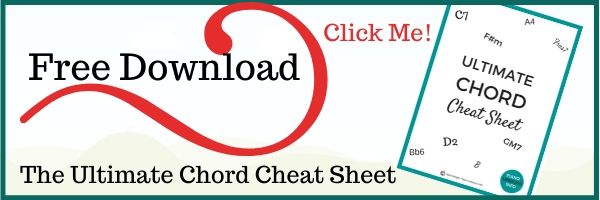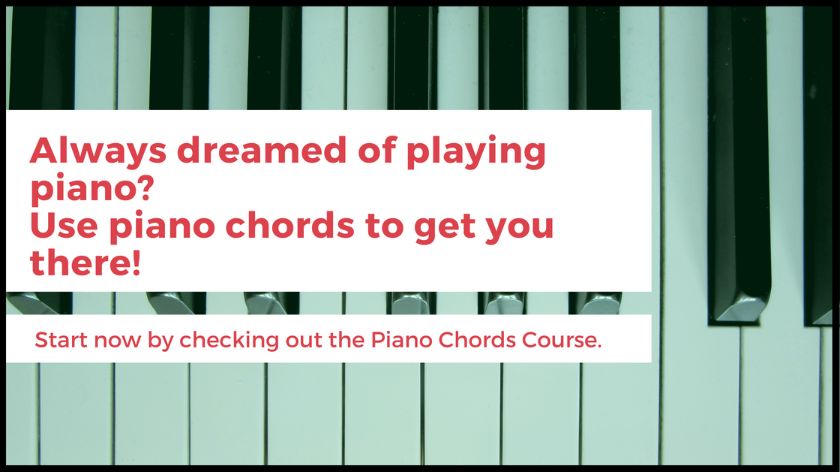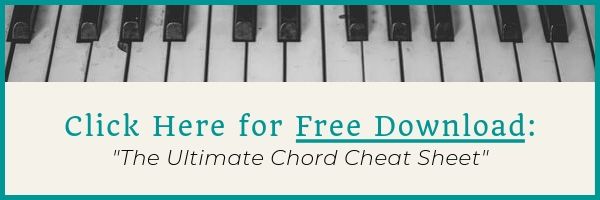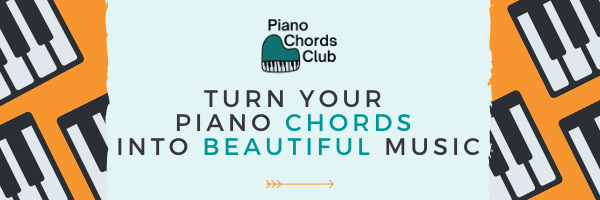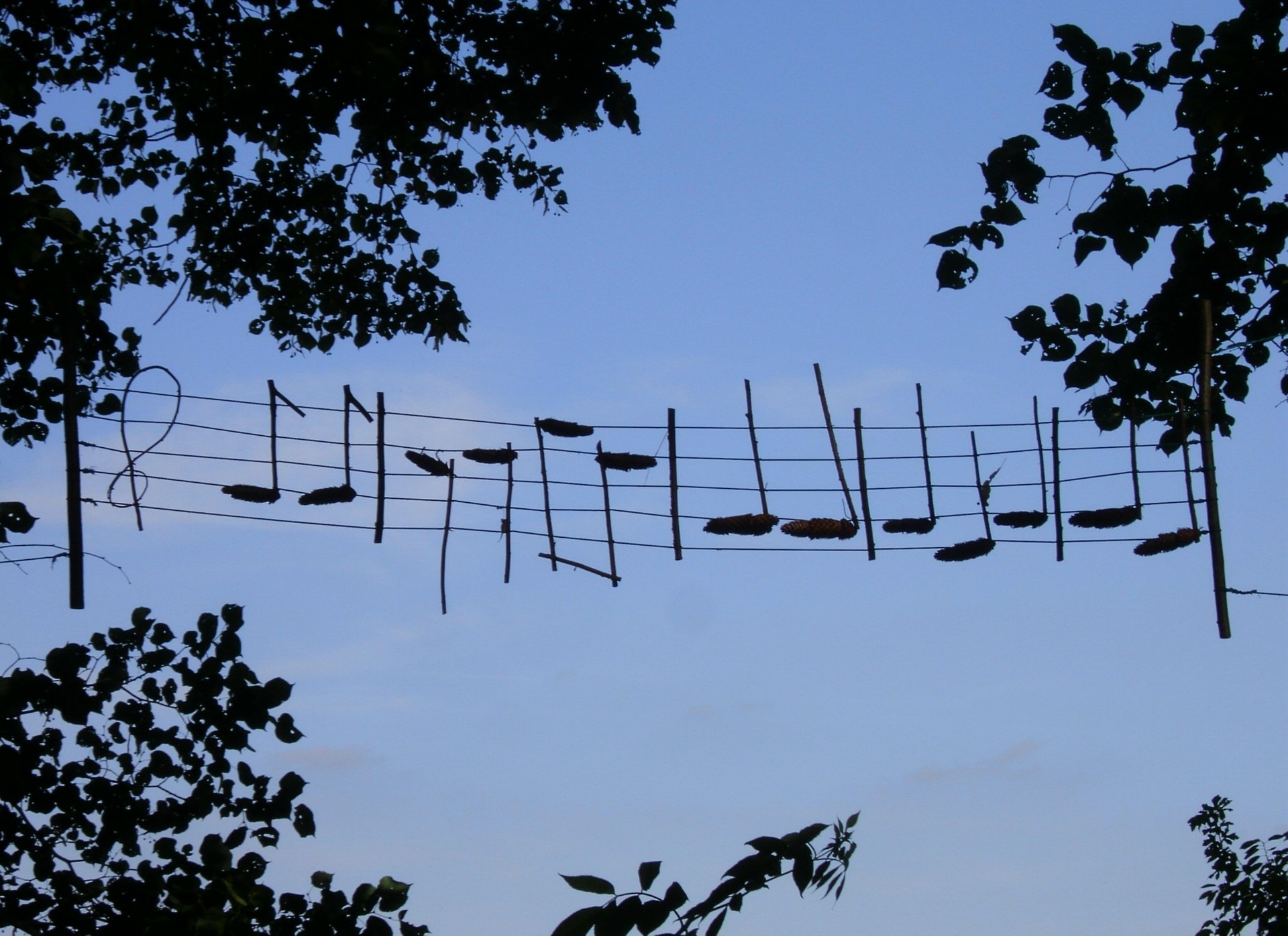Time Signatures in Music Explained
Learning about time signatures is essential for playing any instrument - including piano - and whether you are reading music or not.
Time signatures give you the foundation for the rhythm you will use in whatever you play. Once you understand them, you'll know how to count in music.
Here we'll explain:
- the meaning of the time signature
- how to read it
- show you the difference between different time signatures
- give you lots of examples
What A Time Signature in Music Means
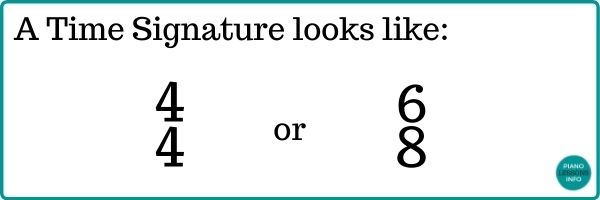
Time signatures come in a package of 2 numbers - a bottom and top number.
These numbers let you know 2 things:
1. How many beats are in a bar.
A bar is written as 2 lines on either side. It helps with reading music. You could think of it a bit like a sentence.
When we know how many beats are in a bar, we know how to count and how high we can count. This helps in figuring out written music as well as playing with others.
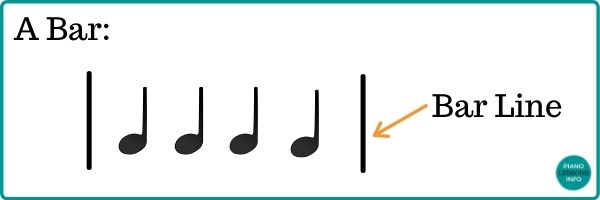 A bar can also be called a measure.
A bar can also be called a measure.2. What type of note gets one beat.
Once you figure out which note gets one beat, you know how many beats other notes get too. This will help you to know how long to hold certain notes.
Time Signatures in Music - Video Tutorial
The Most Common Time Signature: 4/4
4/4 time is the most common time signature. Both 4s mean something different.
We'll use this time signature for explaining what each number means.

The Top Number of a Time Signature
The top number in a time signature lets you know how many beats are in a bar.
With 4/4 time, the 4 on top means that there are 4 beats in each bar.
This number can vary from 2 to 9. If it was 2, it means 2 beats per bar. If it was 9, it would mean there are 9 beats in every bar.
Note: in written music, a bar will have 2 straight lines on each side of it.
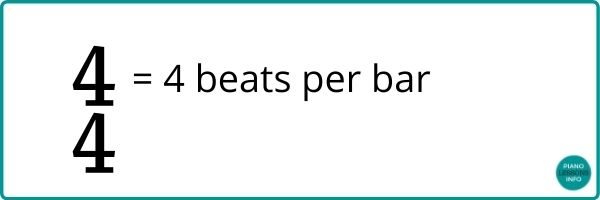
The Bottom Number of a Time Signature
Every time signature will have a bottom number but they won't all be the same. The bottom number refers to a specific kind of note and let's you know that it's that note that gets one beat.
In our example of 4/4 time, the 4 on the bottom refers to a quarter note.
The 4 on the bottom means a quarter note gets one beat.
(If you haven't learned all the different types of notes, the rhythm symbols page will list them out for you.)
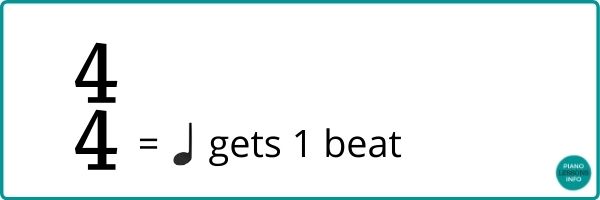
Other Bottom Numbers & Their Meaning:
Here's a run down of the different bottom notes and what they mean.
2 = half note
4 = quarter note
8 = eighth note
16 = sixteenth note
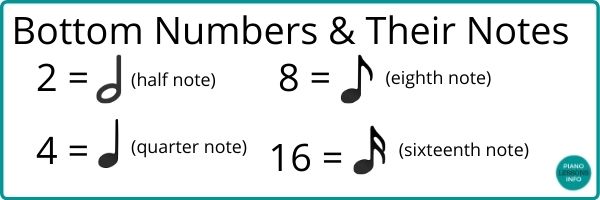
So What Is the Meaning of the Time Signature?
In 4/4 time, there are 4 beats per bar and the quarter note gets one beat.
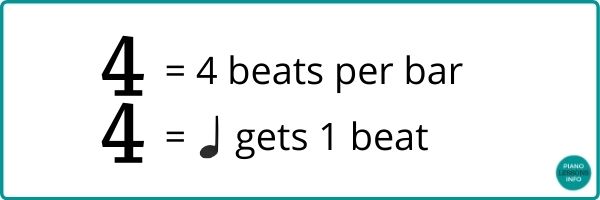
So What Does This Really Mean?
In written music, this is going to help you count our your rhythm and know how to play things. In 4/4 time, you're going to work everything into 4 beats.
But what if you're not reading music.
What if you're just playing a song?
The time signature will give you the beat that you're nodding your head to or tapping along with. You'll know if you should count to 4, 3 or 6.
It may help you to know when to change chords. (Chord changes often happen at the beginning of a bar.) It can also help you to play with others, create an intro or count in a singer.
Examples of Different Time Signatures
There are lots of different types of time signatures but if you know what the different numbers mean, you can figure them out.
3/4 Time
- 3 beats per bar
- a quarter note gets one beat.
2/4 Time
- 2 beats per bar
- a quarter note gets one beat.
5/4 Time
- 5 beats per bar
- a quarter note gets one beat.
- odd numbered top number are on the rarer side
6/8 Time
- 6 beats per bar
- an 8th note gets one beat
9/8 Time
- 9 beats per bar
- an 8th note gets one beat
3/8 Time
- 3 beats per bar
- an 8th note gets one beat
3/16
- 3 beats per bar
- a 16th note gets one beat
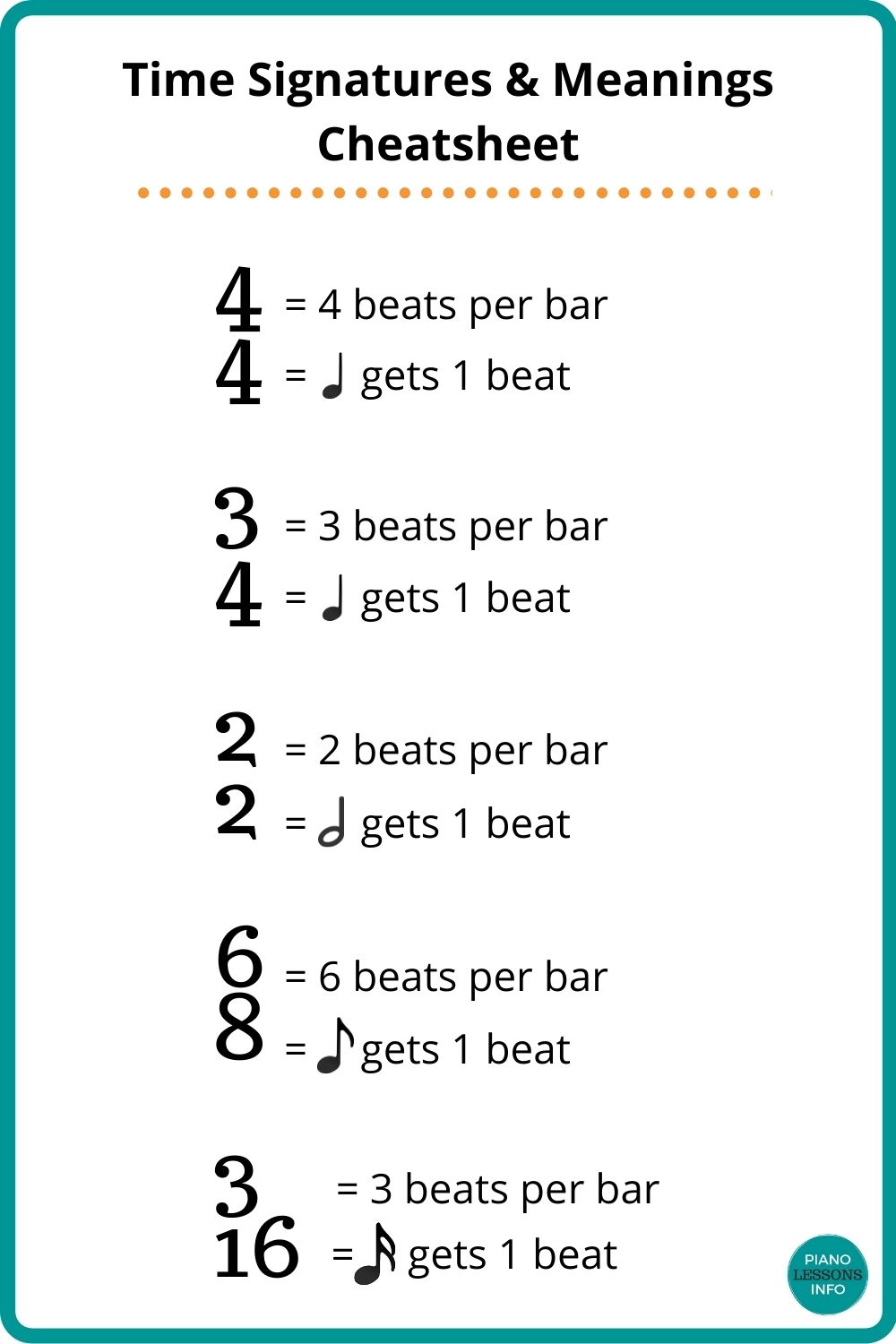
The "C" Time Signature
You may also see a time signature that is a "C" or C with a line through it.
This refers to "common time" which is 4/4 time. So you can count this the same as 4/4 time. It's like shorthand for composers.
Where Does A Time Signature Go?
You will find a time signature at the beginning of a piece of music after the bass or treble clef and after the key signature.
That's generally the only place you'll find it unless a composer switches time signatures in the middle of a piece. Then you'll see it at the section where it switches.
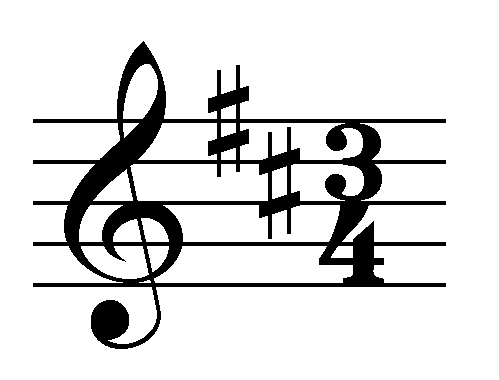 Wikipedia
WikipediaWhy Have So Many Different Time Signatures?
What time signatures let us do is know how to count and where to place emphasis on notes. It lets us know where to stress or accent certain beats.
Time signatures give is strong beats and weak beats.
In 4/4 time, we know the beats 1 and 3 are stronger than 2 and 4.
In 3/4 time, we know beat 1 is the strongest of the three. (Think of a waltz, this is the time signature for waltzes.)
In 6/8 time, (my favourite), you emphasize beat 1 and 4.
Sometimes really slow pieces of music will have a time signature like 2/2. Or a quick piece of music with be in 3/8. If someone is going to write a lot of very quick notes (like 16ths or 32nds), than having a time signature like 3/8 would make that easier to read.
What You Can Do Now That You Know This
Now that you know this, you can figure out how to count in music and know if you're counting to 3, 4, 6 or even 9.
You can work out a rhythm in a piece of music.
You can give emphasis to beats while playing a piece of music.
Exercises
To practice this, you can try this game below and more on the Time Signatures Games page.
Free Download:
Ultimate Chord Cheat Sheet
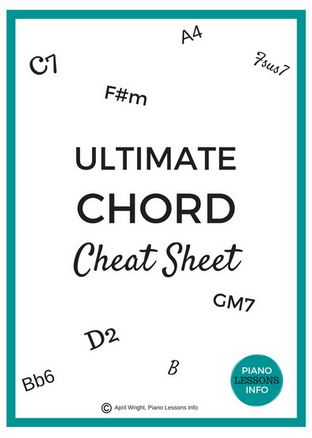
Subscribe below and get free access to the (printable) Ultimate Chord Cheat Sheet.
Recent Articles
-
Piano Notes Chart
Nov 20, 23 10:21 PM
Find a piano notes chart for treble clef and bass clef notes as well as the different types of notes. -
D Chord on Piano + Diagram, How To & Theory
Oct 24, 23 12:20 AM
Learn how to play the D chord on piano with diagram, fingering, D/A, D/F# and a theory explainer. -
Diminished Piano Chords: Chart & How to Make Them
Oct 09, 23 09:23 PM
Learn the different diminished piano chords and how to make them. Here you'll find both a diminished chord chart and an explanation.
Free Download:
Ultimate Chord Cheat Sheet

Subscribe below and get free access to the (printable) Ultimate Chord Cheat Sheet.
